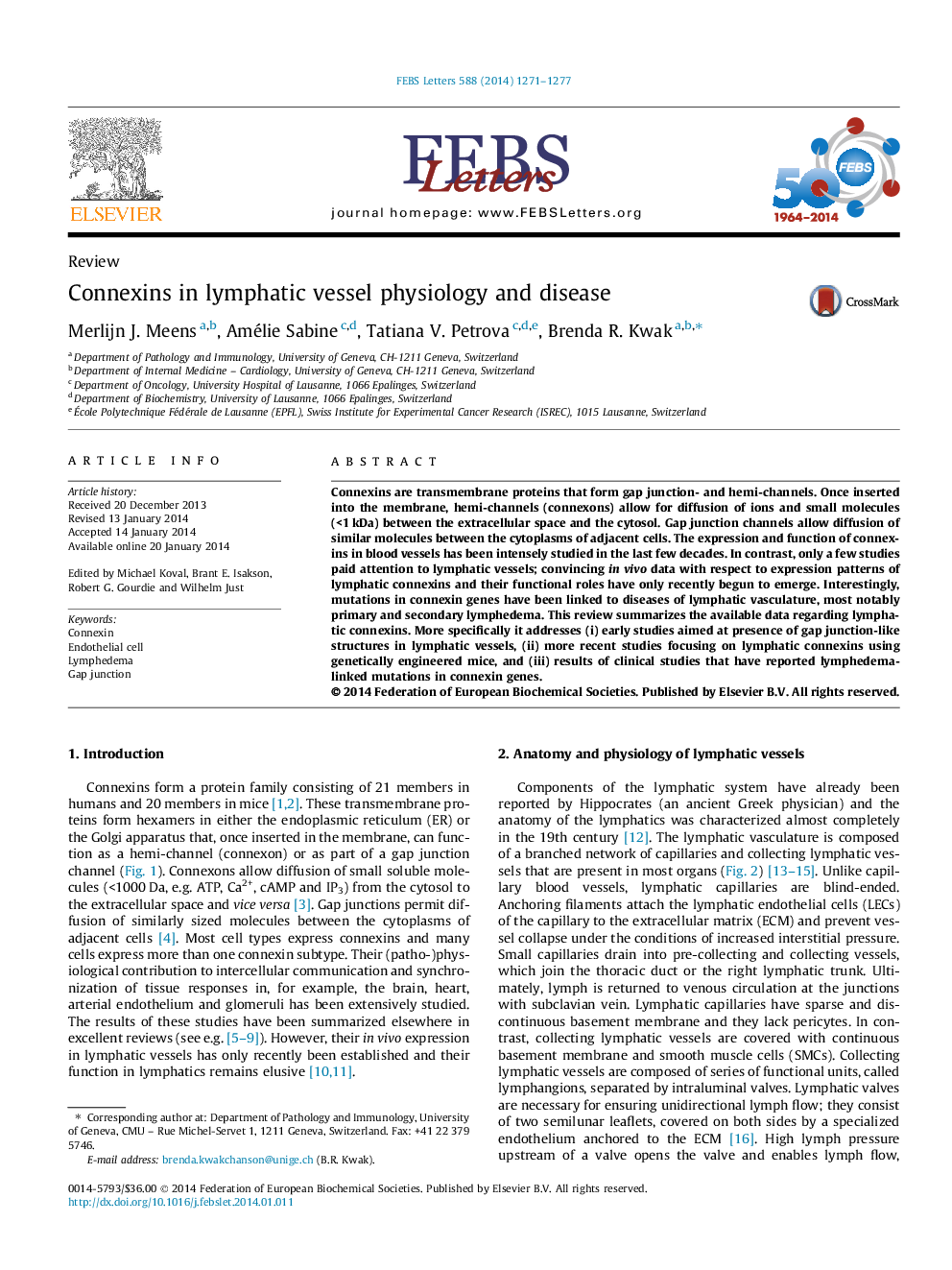| Article ID | Journal | Published Year | Pages | File Type |
|---|---|---|---|---|
| 10870682 | FEBS Letters | 2014 | 7 Pages |
Abstract
Connexins are transmembrane proteins that form gap junction- and hemi-channels. Once inserted into the membrane, hemi-channels (connexons) allow for diffusion of ions and small molecules (<1Â kDa) between the extracellular space and the cytosol. Gap junction channels allow diffusion of similar molecules between the cytoplasms of adjacent cells. The expression and function of connexins in blood vessels has been intensely studied in the last few decades. In contrast, only a few studies paid attention to lymphatic vessels; convincing in vivo data with respect to expression patterns of lymphatic connexins and their functional roles have only recently begun to emerge. Interestingly, mutations in connexin genes have been linked to diseases of lymphatic vasculature, most notably primary and secondary lymphedema. This review summarizes the available data regarding lymphatic connexins. More specifically it addresses (i) early studies aimed at presence of gap junction-like structures in lymphatic vessels, (ii) more recent studies focusing on lymphatic connexins using genetically engineered mice, and (iii) results of clinical studies that have reported lymphedema-linked mutations in connexin genes.
Related Topics
Life Sciences
Agricultural and Biological Sciences
Plant Science
Authors
Merlijn J. Meens, Amélie Sabine, Tatiana V. Petrova, Brenda R. Kwak,
